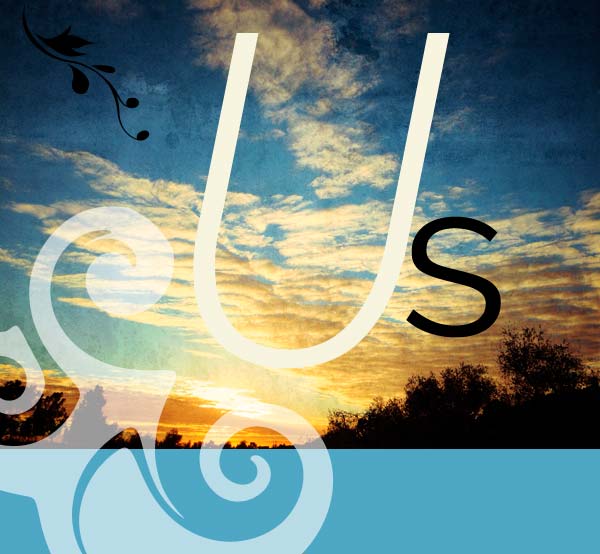How Our Social Media Relationships Begin: Identity & Trust
Can I Trust You?
We usually talk about trust from the point of view of gaining some. It slip slides into the arena of personal acquisitions as we collect others’ trust in us and place it into our storehouse of personal treasures. We find ourselves asking how to become trusted so we can get some more. It’s become a commodity.
It’s important to be trusted. We know that key to being trusted is authenticity and that if we add a dash of transparency and a touch of vulnerability mixed with engagement, generosity and contribution, in due course we will most likely gain trust. Demonstrate our expertise consistently enough and we may eventually build authority in our industry through the trust we’ve gained. I don’t mean to be glib; I take this all very seriously. But like other words we’re using freely these days, I like to take a step back, get into the heart and nature of the concepts and how we apply them. Avoid the formulaic.
Let’s Look At It A Different Way
It can be interesting to shift the gear into reverse and think about it like this: What is it In Ourselves that Allows Us to Trust Others? How do I remain open to your authentic-self, your generous transparency and willingness to be vulnerable? If we look at it from both sides it might help us to find answers to our own basic questions about how these things function.
In Malcolm Gladwell’s book Blink, he focuses on “…how we think without thinking, about choices that seem to be made in an instant -in the blink of an eye- that actually aren’t as simple as they seem.”
“Gladwell explains “thin-slicing“: our ability to gauge what is really important from a very narrow period of experience. In other words, this is an idea that spontaneous decisions are often as good as—or even better than—carefully planned and considered ones.” “The book argues that intuitive judgment is developed by experience, training, and knowledge.”, Wikipedia. He calls it the adaptive unconscious, which is sometimes a strength such as in the judgment of an expert but also a pitfall such as in stereotyping.
How Can I Tell You’re Who You Say You Are?
In social media, we don’t have the advantage of all our sensory processing, body language or touch. But we do have a number of incremental pieces that compile and our intuitive sense can be reliable when the right cues are mixed in.
We build an impression of someone through the content they produce and share, what they say, their reactions, their responsiveness, the way they treat people, their relationships that we bear witness to. We can connect face-to-face via video Hangouts, hear their voice through podcasts. But admittedly, it can be somewhat risky concluding who we resonate with, choosing whose word to trust, which information to count on, what is reliable, consistent. We gather information, we learn, we put two and two or three together and we follow our informed gut.
(We all know the inherent dangers of the Internet and I am choosing not to address those here.)
In A Land Not So Far Away…
A number of years ago, I met a man in an unusual circumstance. I was at a salon waiting for a hair appointment seated behind a tall display facing away from the front door and windows reading. I became aware of someone standing near me. He was hovering and I looked up to find myself gazing at a man as he gazed at me. I hadn’t been paying close attention, he looked quite out of place and because in my mind he didn’t fit in this context, it took a moment to register that he was really there. And then, it was a beat before I realized he was talking to me. And then I heard it.
He was requesting a hug. I don’t recall the thoughts that went through my mind, but I do recall feeling uncomfortable, experiencing a moment of shyness and a faint bit of fear. My mind was telling me it wasn’t right somehow, but I stood and moved towards him anyhow because my senses were telling me to. I got up and gave him a hug. He was tall and large. I am small. He easily folded me into his arms and it felt comforting and warm. And then he left. He was gone. That was the entire exchange. Nothing further.
The Trickster
In Melville’s, The Confidence-Man: His Masquerade (1857), “The novel’s title refers to its central character, an ambiguous figure who sneaks aboard a Mississippi steamboat on April Fool’s Day. This stranger attempts to test the confidence of the passengers… Each person including the reader is forced to confront that in which he places his trust.
The Confidence-Man uses the Mississippi River as a metaphor for those broader aspects of American and human identity that unify the otherwise disparate characters. Melville also employs the river’s fluidity as a reflection and backdrop of the shifting identities of his “confidence man.” (both quotes from Wikipedia, link above)
Learning To Trust
Look at how we learn to trust others we’ve never met in social media and online. For instance, the people that we engage with and that we Circle, and Friend, Follow and Connect with. Our choices might be graced with beauty or they could be fraught with potential harm, even danger. How do we make those choices? What serendipity brings us together with people who will grow to be cherished friends, stimulating colleagues, inspiring muses, loyal supporters, encouraging cohorts? There’s the uncanny at play. Room for instinct and improvisation. Heart. Gut. Creativity, even.
Serendipity
…A few days after The Hug, I was at a business-networking luncheon with a large group of women. One of them told us that she’d heard that morning that a man who had once touched her deeply had died. He died alone in the night in his parked car up on the mountain pass above town (a very peculiar place for a car to be parked) and was found the next morning by the Highway Patrol. Through some sleuthing, she learned that this was the man she’d known briefly years ago, when she was a young woman enrolled here at the local university. One afternoon, she was at a gas station fretting over her flat tire and the fact that she couldn’t buy a new one because she had no money. And a most unusual thing happened. A man she’d never seen before approached and offered to buy not only one but four tires for her car. Naturally, it was an offer she couldn’t refuse and always held this magical experience close to her heart as a lesson in how sometimes, it can be a wonderful thing to trust a stranger. And then, maybe fifteen years later, she found herself putting together some pieces of a puzzle and learned that this was the gentleman who had died alone in his car on a cold winter night up in a remote area outside of town. That is not the end of the story.
Are You Open Or Closed?
When we meet someone new how do we remain open within our lack of familiarity to who they might eventually reveal themselves to be? We’ve all experienced that small germ of suspicion or moment of unease, the discomfort that arises with somebody unknown to us. It can be a challenge to remain open. It’s easy to have resistance on some level. I am not suggesting we sidestep sensible caution. Yet, remaining open is an important ingredient.
Even if there is no particular resistance, we do often simply lean towards the familiar and the known. Cliques form, small groups remain small, people get left out inadvertently, we miss out on opportunities for growth, learning, new cultural ideas, new friendships, even business relationships. Doors may close.
It Might Have Been Different
On that day in the salon, if I had been facing the windows, more aware of my surroundings, I might have seen that the gentleman in question had been washing the windows. I might have had an element of trust built in as he advanced towards me. I might have understood that he did, indeed, have a connection to the place. That he belonged. But instead, in my mind’s story, this odd, big man dressed in overalls looking just the tiniest bit disorganized had walked in off the street and he was nobody to me or anyone else for that matter. Here I was in my own little waiting-cocoon and in walks this complete stranger looking for a hug. There’s this feeling of danger and a moment of trepidation. I will never know if he needed a hug or if he thought I did. Who was it really for? And of course my decision to walk into his arms took place in a nanosecond. But I am so glad I did because as it turned out, I learned that I was likely the last person to ever hug him. He died alone that night up on the pass. And that’s still not the end of the story.
Simply This
A group of people organized a burial and a graveside memorial for Carleton. That was his name. The turnout for the event was astounding and it was a once in a lifetime experience. There were hundreds of people gathered at the cemetery that stands on a beautiful piece of land overlooking the ocean. One by one, people came forward to share their stories about Carleton. As it turned out, he was one of those special souls who possessed an incredibly generous nature. He was a man who had helped and given of himself over and over again in his tenure of decades living here. With the stories mounting, each more poignant than the last, we saw collectively how remarkable this man was. The one I hugged. Who hugged me. No family anyone knew of, living in his car, occasional work here and there, funds from an unknown source, this man was fueled by his heart over and over again to help others. And in almost every story that was told, he was the stranger that nobody knew. Until he wasn’t.
What do we learn from this? I’m not sure we can package it into a nice neat bundle, but I do feel it’s helpful to recognize that we simply don’t know what’s in front of us all the time and continuing to inquire, to be patient to what might present itself, to allow an openness in our dealings with other human beings will enrich our experience. Sometimes, it takes a leap of faith.
The hug was for us.
SUBSCRIBE & RECEIVE BLOG NOTIFICATIONS OF NEW POSTS:
* Don’t miss any of our blog posts! Subscribe at the top right of this page.
Photo Credit: Gina Fiedel
We’ve recently installed Google+ Comments. (they were not in place at the time this post was published)
If you’d like to leave a COMMENT- PLEASE CHOOSE:
‘W’ for our WordPress comment






